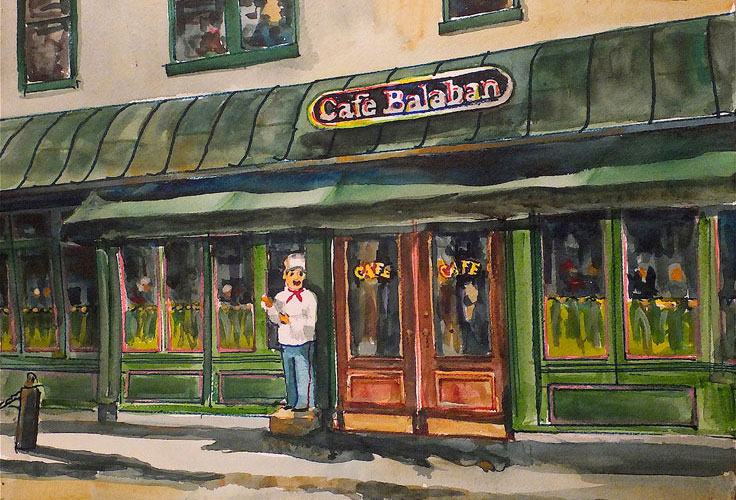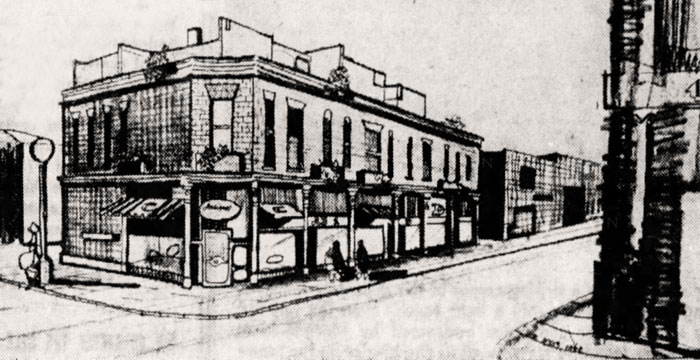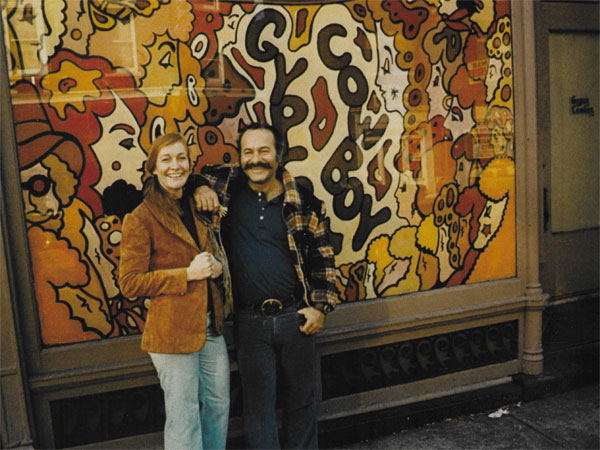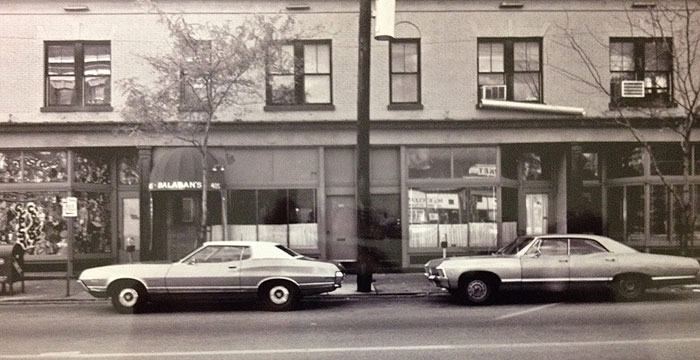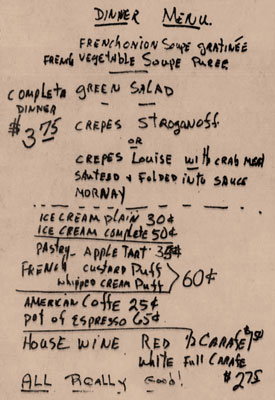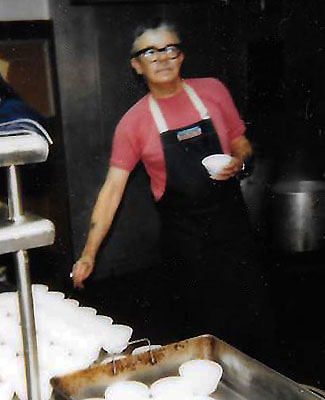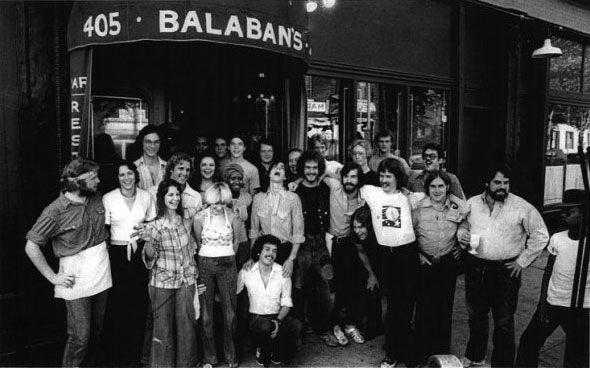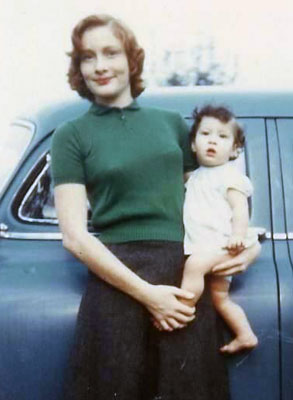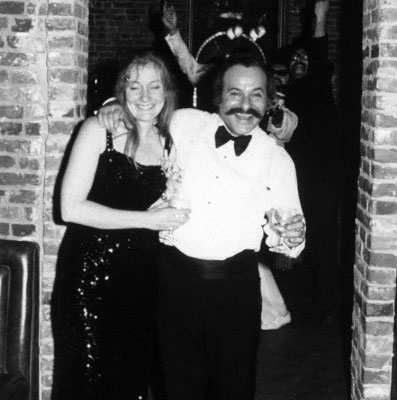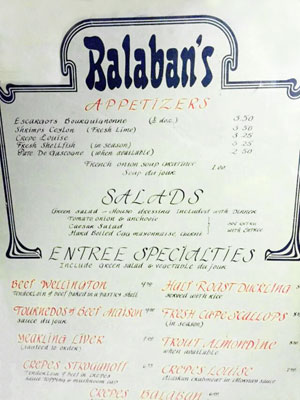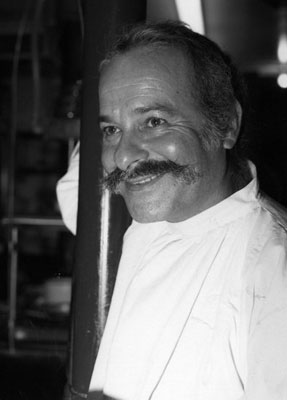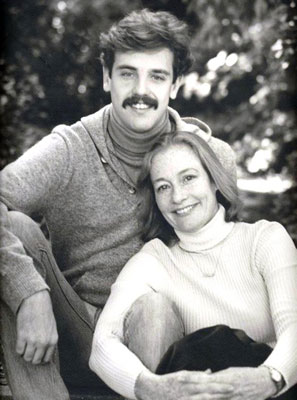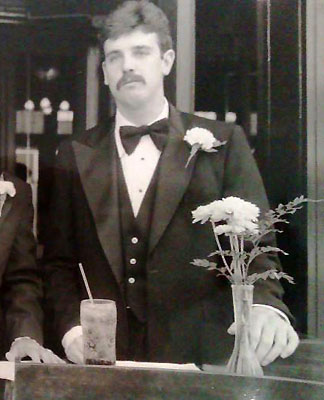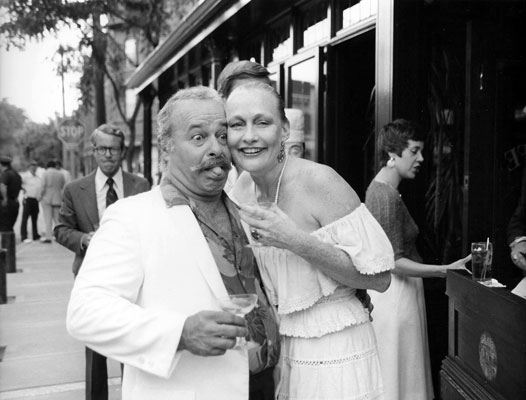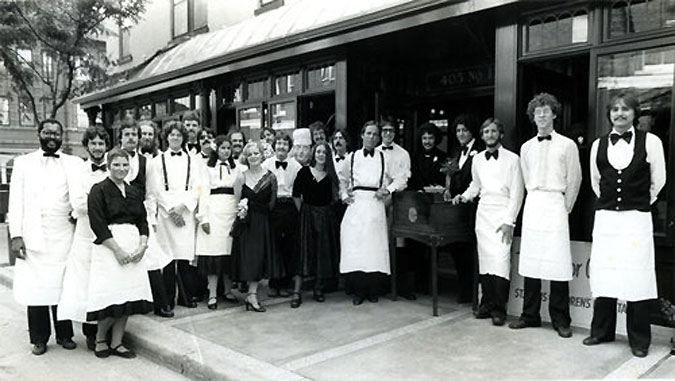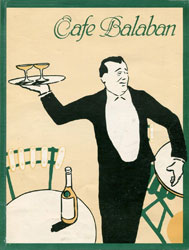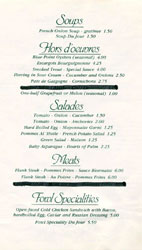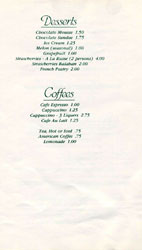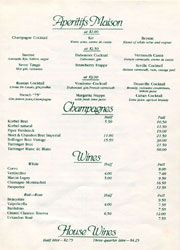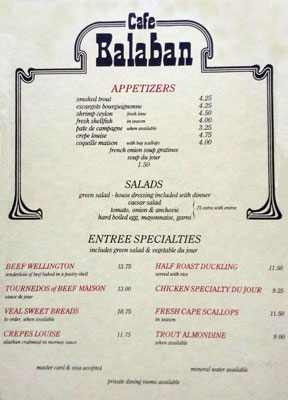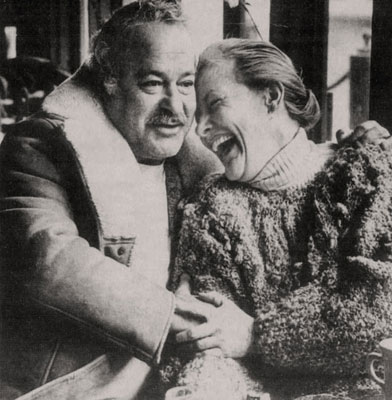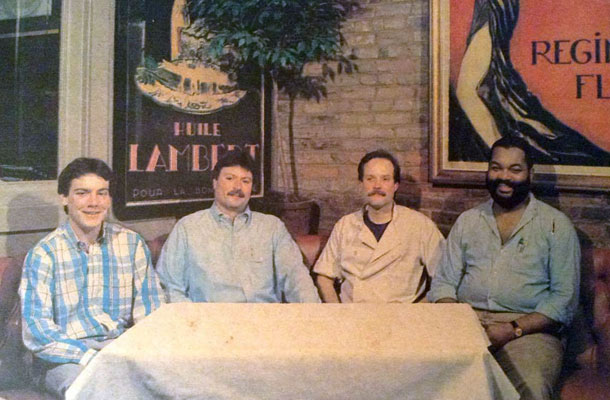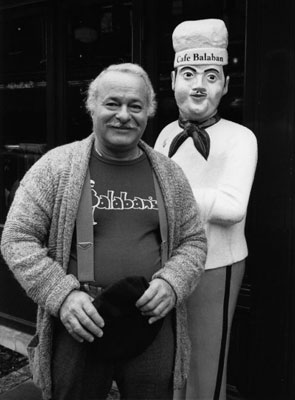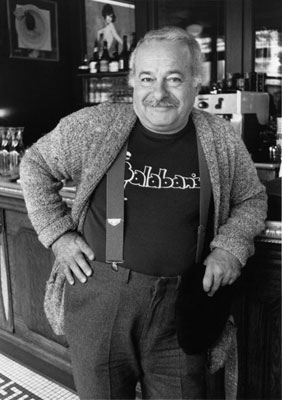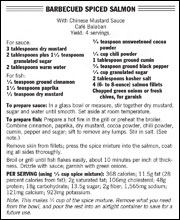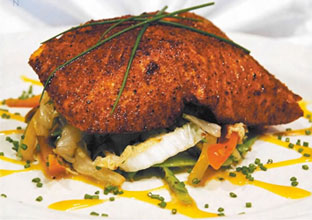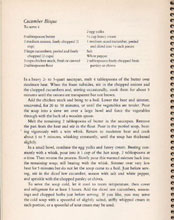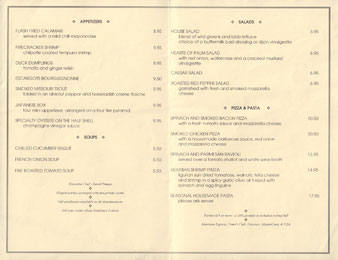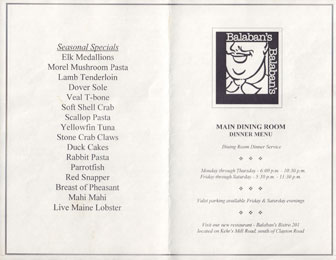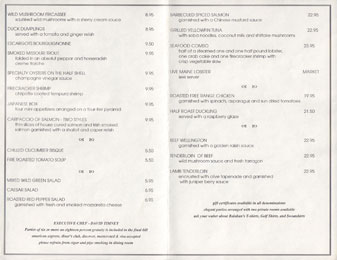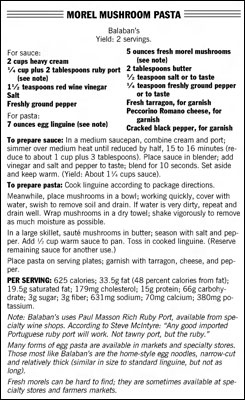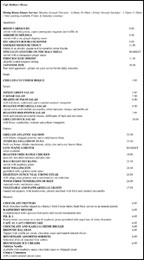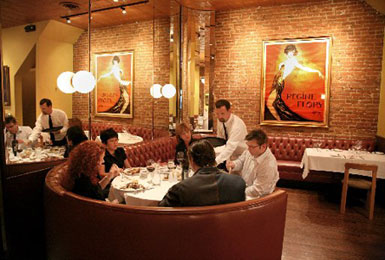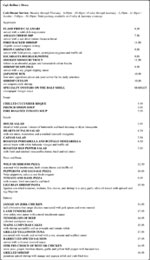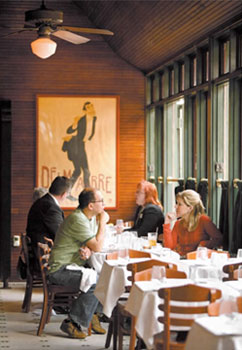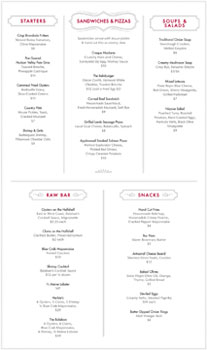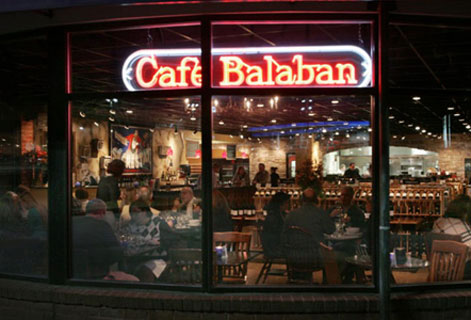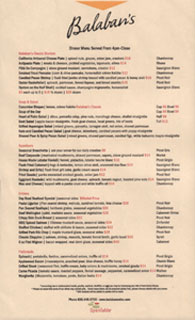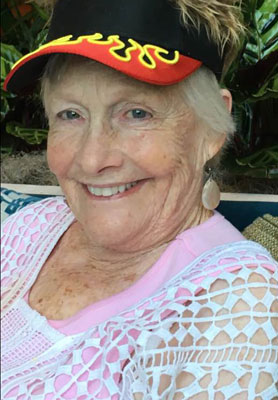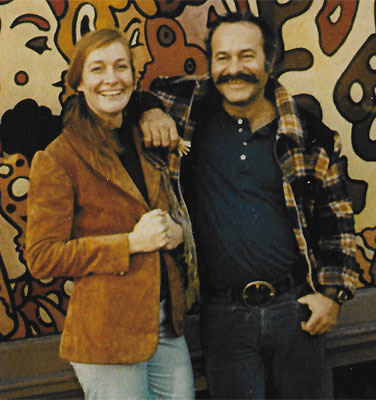|
Balaban's Herbert J. Balaban was born in Chicago on February 24, 1930 to Max and Dena Balaban. Two years later, Herb's father died and the family moved to Europe. Returning five years later, Dena Balaban met I. L. Carp, a St. Louisan who owned a chain of department stores. They married and moved to St. Louis.
Herb Balaban Carp graduated Country Day School
in 1948, attended Washington University and the University of
Missouri, and then went into business with his stepfather. In 1955,
he married Nedra Anderwert.
By the end of the decade, Herb had transformed his 401 North Euclid space into the Gypsy Cowboy – a chic clothing boutique with a western accent. It had the appearance of a prairie trading post, with rough brick walls, exposed wood beams and unpolished wood floors. Stuffed birds seemed to swoop down from the ceiling, enormous American flags hung from the beams and a collection of animal horns were mounted on the wall. The Gypsy Cowboy had a regular visitor, Adalaide Daley – the future Mrs. Herb Balaban Carp. Herb had been divorced for some time.
Adalaide, an attractive strawberry blonde, was
a social worker with the Missouri State Welfare Department. She was
from Houston, where she said it was customary to take a person’s
coat and immediately start feeding them. She read cookbooks like
they had a plot and was paranoid about her soup recipes.
The space next door to the Gypsy Cowboy – 405 North Euclid – had been one small restaurant after another, and none of them had done very well. It was Sarah's from 1962 to 1964; at one point it was the Pleasant Peasant; by 1972, Timothy’s had moved out. Herb was concerned the space would get a "loser location" reputation. So on March 14, 1972, he opened his own restaurant in the space and talked Adalaide Daley into helping out.
Balaban’s rather obscure entrance was distinguished only by a small European bubble canopy over the doorway. A friendly little bar greeted patrons to the left as they entered, apart from a compact dining area that seated 43 persons. A dramatic oil painting of an amply proportioned life-size nude was to one side of an old brick wall, and on the other side was a companion piece of a nude couple, also life-size. Between them was a 12 feet tall early Victorian mirror. Along the walls were antique brown banquettes. Overhead was an old fashioned four-globe chandelier. The floors were bare wood. Herb brought on Charles Perrine, a neighborhood personality known as "Lady Charles," as his chef. But Adalaide was in charge of the kitchen.
There was a choice
of two soups (onion and chilled purée of carrot), green salad and
three kinds of crepes (Crepes Stroganoff, Crepes Balaban and Crepes
Louise). With a green salad and soup, each of the entrees costs
$3.75. Desserts and beverages were extra.
The first night, Balaban's served 22 dinners.
Herb had projected 40 dinners during the week and 70 on weekends.
But soon he had to break down the walls of two stores to the north,
expanding seating from 43 to 150, and one to the south for a second
bar. By the restaurant's first anniversary, they were selling 250
dinners on Friday night and 350 on Saturday night, with three or
four deep at the two bars.
In 1974, Herb Balaban Carp and Adalaide Daley were married, although Adalaide had some trepidation.
As Balaban’s evolved, so did its menu; it was no longer based on Adalaide's ubiquitous crepe.
A key figure in Balaban's early growth was John Sullivan. He got his start in Adalaide's kitchen.
In 1977, Herb began construction of a sidewalk
cafe. He acquired permission from the City of St. Louis to build
upon and own the sidewalk in front of Balaban's and then build a new
sidewalk on the parking lane, with no parking allowed in front of
the restaurant. The cafe construction was finished in 1978 and Herb
changed the name of his restaurant to Cafe Balaban. At the same
time, he also legally changed his own name to Herb Balaban, taking
his birth father's surname.
The cafe had a
different menu than the main dining room, although customers could
order from either menu, no matter where they were seated. The cafe
was open seven days a week, serving a continental breakfast, lunch
and a light evening dinner.
In October of 1986, after 14½ years of building Balaban's into a nationally acclaimed restaurant, Herb and Adalaide Balaban sold their restaurant to Tom Flynn and Steve McIntyre. Herb retained ownership of the building.
Tom Flynn
grew up in the neighborhood and had worked at Balaban's for 11 years
as a cook, waiter, bartender and manager before buying the
restaurant. Steve McIntyre was a high-school friend of Flynn's, and had
worked at Balaban’s at one point in his restaurant career. Flynn
continued on in his former position as general manager.
Herb Balaban remained as a consultant, and
could often be found around the dining room, still wearing flashy
suspenders that had become something of a trademark.
The new owners were proud of their seafood offerings, which made up 60 percent of their sales. The barbecued spiced salmon, with its spicy Chinese mustard sauce, replaced the roast duckling as the most popular dish. But Balaban’s famous beef Wellington was still a draw. So was the classic chilled cucumber bisque, which was made by cook Selina Ford, starting in 1974. Selina perfected making very large quantities of the recipe. But the recipe itself was not Selina's.
In September of 1988, David Timney was brought
on as executive chef. He changed the menu from distinctly French to
one that included Asian and American foods.
One unusual appetizer was the Japanese box, presented in a handmade
wooden box with four shelves of Oriental delicacies. Timney also created duck potstickers, smoked Missouri trout in
a corn pancake, and mesquite-grilled
swordfish with lemongrass and coconut-milk broth.
* * * * * Herbert J. Balaban died on October 8, 2000 in Chicago at the age of 70, after a short illness. Herb and Adalaide had moved to an apartment on Chicago’s Gold Coast in 1994, leaving the Central West End after 33 years. On June 15, 2001, at the age of 44, Tom Flynn drowned in Playa del Carmen, Mexico while on vacation with his wife and their six children. Steve McIntyre took over Flynn’s full-time duties as manager of Balaban’s. In July of 2001, Pete Rothschild bought the building that housed Balaban’s restaurant from Herb Balaban's estate. * * * * *
Steve McIntyre and
his new executive chef, Dan Joyce, continued on. They added seasonal
pasta dishes to the menu. The winter pasta special was
hand-harvested diver scallops from Nantucket and Maine, which were
only available for eight to ten weeks, starting in December. Joyce
prepared them with a port wine cream sauce, fresh tarragon and
Gruyère, over house-made black pepper linguine. After the diver
scallops, a lobster and rock shrimp pasta special filled in until
fresh morel mushrooms arrive. The morels usually ran through July,
sometimes into August. In the fall, customers called to find out
when the rabbit tenderloin in Marsala sauce would appear on the
menu.
In November of 2006, Steve McIntyre sold Balaban's to Brendan Marsden of Modesto and a business partner, Harlee Sorkin.
Marsden hired Andy
White, who had been at Harvest, as his executive chef. White
completely redid the menu, with the unusual fusion of influences from
France, Italy and the American Southwest, while keeping only a few
of the restaurant's signature dishes. White's new menu proved to be problematic, alienating many of the restaurant's longtime customers. Marsden and Sorkin closed Balaban's after the dinner service on January 27, 2008. They had been trying to sell the restaurant since November, without success. On October 17, 2008, Aaron Teitelbaum and Jeff Orbin, who owned Monarch in Maplewood, reopened Balaban's as Herbie’s Vintage '72. They purchased the restaurant's fixtures and leased the space from the building's owner, Pete Rothschild. But Steve McIntyre still owned the Balaban's name, and Teitelbaum and Orbin chose not to pay McIntyre to use it. Herbie’s Vintage '72 eventually abandoned the Central West End in October of 2016, relocating to Clayton.
Steve McIntyre not only retained the Balaban's
name, but he also retained the restaurant's classic
recipes and its world-class wine inventory. On November 20, 2009,
McIntyre and partner Brian Underwood opened Balaban's Wine Cellar &
Tapas Bar in Chesterfield. The restaurant still thrives, with smoked
trout pancake, cucumber bisque, beef Wellington and BBQ spiced
salmon gracing its menu.
* * * * * Adalaide Cash Balaban is alive and well, and living life to its fullest in Silsbee, Texas. She is the local councilman for her district and the representative for Southeast Texas in The Silver-Haired Legislature.
Copyright © 2016 LostTables.com |
||||||||||||||||||||||||||||||||||||||||||||||||||||||||||||||||||||

